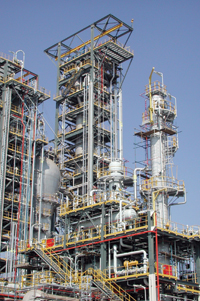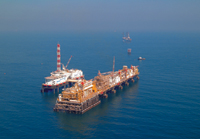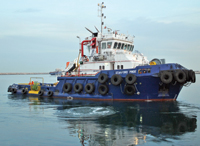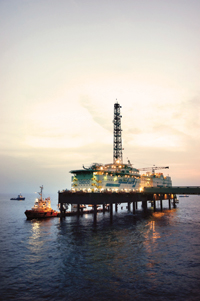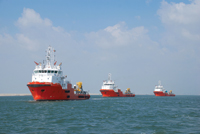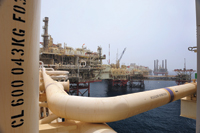
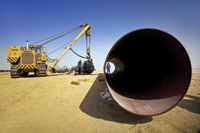 Pipeline linking Habshan with Fujairah
Pipeline linking Habshan with Fujairah
ABU DHABI plans to continue exporting cargoes of Murban crude oil from the port of Fujairah with further shipments to be exported through the Abu Dhabi-Fujairah pipeline, as the UAE steps up oil exports from the terminal that lies outside the Strait of Hormuz at the mouth of the Gulf.
The 48-inch diameter, 400-km pipeline and associated facilities have capacity to transport 1.5 mbpd of crude from the onshore Habshan oil fields in Abu Dhabi to the terminal and offshore export facilities in Fujairah, a major bunkering centre and one of the seven emirates that make up the UAE federation.
The first cargo of Murban was shipped through Fujairah in July last year, allowing Abu Dhabi, which produces more than 90 per cent of the UAE’s oil, direct access to its key Asian market and to avoid congestion through the narrow Strait of Hormuz flanked by Iran and Oman.
The initial shipment coincided with a renewed threat by an Iranian naval commander to shut down the vital waterway, through which roughly 20 per cent of the world’s tradable oil transits on its way to world markets.
The new pipeline, when it is at full capacity, will allow the UAE to move as much as 1.8 million barrels of oil per day – two-thirds of current exports – on to the Gulf of Oman and so to world markets while bypassing the Strait altogether.
To be sure, there is very little logic behind the recurring Iranian threat. Its own oil, which is still the mainstay of its economy despite the international sanctions, must also move through the Strait. A conflict in such close proximity would harm everyone involved.
Further, any gesture aimed at closing off the waterway would prompt a sharp reaction from the United States, which now normally maintains two aircraft carrier groups in the region as part of its military build-up. The gunboat diplomacy is meant to influence Iran’s decisions and allay fears of a closure of the Strait.
The UAE, currently producing 2.6 mbpd of crude oil, previously relied almost exclusively on the Gulf ports for its exports.
But the new loading facilities at Fujairah, which lies on the Gulf of Oman, will boost oil export capacity as Abu Dhabi ramps up its oil production, which is targeted to increase to 3.5 mbpd by 2017 from an estimated 2.85 mbpd currently.
The Abu Dhabi National Oil Company (Adnoc) and the International Petroleum Investment Company (Ipic), developer of the strategic pipeline project, also say in a joint statement that the pipeline would be handed over fully to state-owned Adnoc during the first quarter of 2013.
“The Abu Dhabi Crude oil Pipeline (Adcop) project, which is being implemented by Ipic, is now undergoing final commissioning and is expected to be handed over fully to Adnoc during Q1 2013,” the companies say in the statement.
Ipic, the cash-rich oil investment arm of the Abu Dhabi government, decided to proceed with construction of the pipeline in 2007 amid rising tensions in the region over Iran’s nuclear ambitions and threats by Tehran at the time to close the strategic oil shipping lane in response to international sanctions.
The pipeline was initially scheduled to be operational in early 2011 but completion was delayed for technical reasons.
The pipeline will be operated by the Abu Dhabi Company for Onshore Operations, or Adco, a joint venture between Adnoc and foreign partners.






















































































